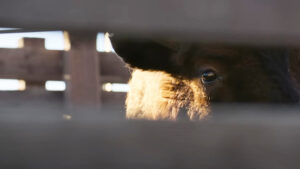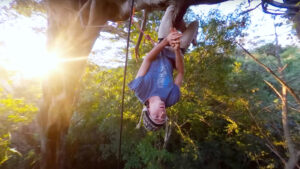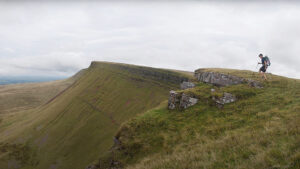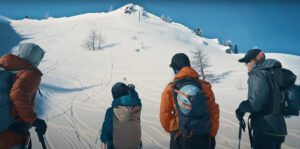What is powdersurfing — beyond a cool, tactile compound word?
In fact, it’s exactly what it sounds like: Powdersurfers ride a board with no bindings on snow. If you’ve ever ridden a torpedo sled standing up, you’ve technically powdersurfed. But in places like Hokkaido, Japan, both the powder and the sport run a little deeper than that.
Just ask Atsushi Gomyo, a Yuki-Ita (literally “snow board”) shaper from the downcountry city of Nagano. Gomyo is part of a growing contingent of artisans that identify with the country’s tradition for handcrafting, and simultaneously hunt for ways to push the envelope in the emerging scene of powdersurfing.
His riding background reflects his urban living circumstances.
“When I was about 10 years old, I became fascinated with skateboarding,” he says (translated) in the film “Yukimaker”.
He really wanted one, but he couldn’t get one anywhere nearby. So he did what any resourceful, properly stoked kid would do: He found one in a catalog and saved up boxtops until he had enough to send in.
Fast forward a few decades, and Gomyo still appears to love boards as much as he did then. But the medium has changed — he traded concrete for snowbanks after he and his friends improvised a powdersurfing day.
“I just thought it would be cool to ride powder on those simple skateboard-like decks,” he recalls in the film.
Powdersurf boards: attention to detail
In a way, you could still call Gomyo’s output “simple”, insofar as there’s a requisite beauty in a simple tool, one that reflects the thing’s purpose in every stroke its creator gave it.
Powdersurf boards have to exhibit a careful balance to be effective. They can’t tunnel through powder like snowboards do — otherwise, they’d rip out from under your feet. They need to be broad but not bulky, so you can float with control. Sensitivity and stability are both key because you can’t muscle them around like snowboards but they can go fast (watch the movie, you’ll see).
And to be beautiful, they obviously need to look cool. Gomyo’s got that covered. His Yuki-Ita boards showcase elegant shapes, detailed woodworking, and subtle touches an expert rider would know well. Witness the little cylindrical nubs on some of his boards and the carving channels on others.

Screen capture: courtesy Pogo Snowboards/Longboards
It’s the simple things
Take a trip through powdersurfing philosophy and technique, and tour Gomyo’s workshop in Yukimaker. There can be sublime peace in listening to a master craftsman describe his work. Personally, I could listen to Gomyo talk about decks and simple pleasures forever, and never cut him off.

Atsushi Gomyo. Screen capture: courtesy Pogo Snowboards / Longboards
“The sensation of floating. The more I ride, the more board designs I want to create. With a Yuki-Ita, there is nothing holding you to the board. The connection between the snow conditions and your deck becomes very important.
“Yuki-Ita riding is not about going fast, or jumping high and far,” he concludes. “It’s about the pleasure felt by simply staying upright.”






